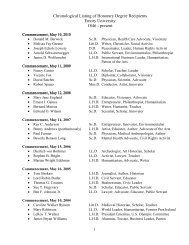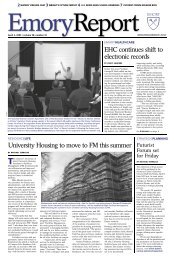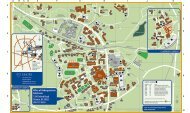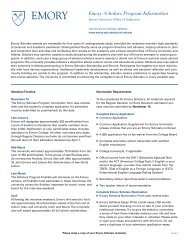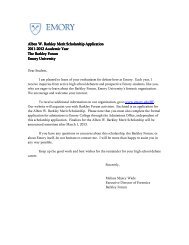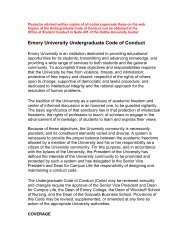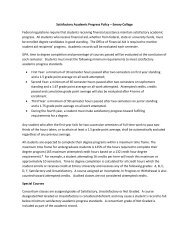DOSY Experiments - Emory University
DOSY Experiments - Emory University
DOSY Experiments - Emory University
You also want an ePaper? Increase the reach of your titles
YUMPU automatically turns print PDFs into web optimized ePapers that Google loves.
The number of increments to use depends on the range of diffusion coefficients to be covered<br />
and on the balance between systematic and random errors, but will typically be in the range of 15<br />
to 30. If significantly different diffusion coefficients are expected in a mixture more gradient<br />
strengths might be needed to have sufficient number of usable data points also for the slowest<br />
and the fastest diffusing component. As in any quantitative experiment, there is a balance to be<br />
struck between signal-to-noise and accuracy when choosing a repetition rate (d1). In <strong>DOSY</strong><br />
experiments a delay of 1-2 T1 suffices, provided that care is taken to establish a steady state<br />
before acquiring data. It is recommended to set ss to 8 or 16 to have steady-state pulses at<br />
the beginning of the experiment and run the acquisition interleaved (set il='y') especially for<br />
experiments covering several hours of experimental time.<br />
Each sequence comes with a pulse sequence specific acquisition panel. It enables the operator<br />
to set parameters and setup related commands directly. Figure 9 shows the acquisition panels of<br />
the Doneshot sequence. The Acquire/Defaults panels provide access to the most important<br />
parameters to set up the experiment. For users with low panel level this is the only acquisition<br />
panel available. The Acquire/Pulse Sequence panel lists all relevant sequence related<br />
parameters.<br />
Figure 9 The Acquire/Defaults and Acquire/Pulse Sequence VnmrJ panels of the<br />
Doneshot pulse sequence.<br />
22






